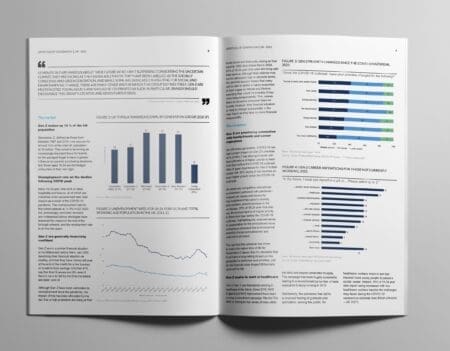Breakfast key to growth of foreign fast food market in China, reports Mintel
With the total amount of foreign fast food outlets in China set to break the 50,000 mark this year – up from 48,477 in 2011 and 36,037 in 2006 – and 44% of Chinese consumers saying that they plan to spend more on fast food in the coming year, the potential for the sector is clear. However it seems that there is further opportunity for operators wanting to tap into this lucrative market, as new research from Mintel reveals that Breakfast is still the under penetrated daypart for foreign fast food outlets. Indeed, only one in five (21%) urban Chinese consumers eat at fast food restaurants in the morning (4am-11am) – as opposed to 75% during lunchtime.
Tan Heng Hong, Senior China Research Analyst at Mintel, said:
“Despite having the upper hand in quality, safety and service, foreign fast food still has much work to do in flavour, affordability, health and variety in order to compete more effectively against Chinese fast food, which has the largest share of the fast food sector. To increase consumption of foreign fast food, more has to be done to unlock opportunities in the breakfast market where usage is the lowest.”
Overall, it seems foreign fast food outlets still have a way to go to match their Chinese counterparts. Mintel’s research has found 86% of respondents have eaten at Chinese fast food restaurants compared to 68% at foreign fast food restaurants in the past year. However, inclusion of local menu items could help bridge this gap. Mintel’s research finds nearly three quarters (76%) of consumers express an interest to see more fast food options with local flavours on the menu. When asked about what consumers would like to see more of at foreign or Chinese fast food restaurants, the majority of consumers selected the introduction of food with local flavours as their top pick (15%).
“Chinese fast food restaurants, which serve Chinese staples including rice and noodles, are more popular as they win on price, variety, nutrition and flavour. Hamburgers, pizza and Japanese noodle or rice dishes served by foreign fast food restaurants are less popular because they are perceived to be more expensive or less healthy, which makes foreign fast food an occasional indulgence, rather than an everyday purchase. It is clear that consumers demand local flavours on their menu and this can be applied to the breakfast daypart, especially with items that integrate well on the menu, like porridge. The challenge for foreign fast food chains is to come up with new innovative products that can meet the demand for a more localised taste. ” Tan Heng Hong continues.
The market for foreign fast food in China has seen steady growth over the past five years as Chinese consumers have incorporated it ever more into their lives and culture. China’s foreign fast food sector grew at a compound annual growth rate (CAGR) of 19% from 2006-11 to reach a market value of RMB 75.1 billion or 11.8% of the overall fast food sector. And there is further good news for the market for foreign fast food in China, as Mintel forecasts the sector to increase to RMB 171 billion by 2017, growing by about 95% on the expected value for 2012 or a CAGR of 14.3%. Furthermore, the number of outlets, chained and independents, is expected to increase to 71,964 outlets by 2017, up 39% on the expected number for 2012.
When it comes to attitudes towards foreign fast food outlets versus Chinese, there is a clear divide over a number of aspects. Foreign fast food outlets win out on speed of service – with 19% of Chinese consumers saying that they perform a lot better – compared to just 1% for Chinese outlets. Foreign outlets also have the advantage in terms of hygiene perception – with 18% of Chinese consumers saying foreign fast food outlets perform a lot better in this area (compared to 1% for Chinese outlets) as well as ambience – with 14% of Chinese consumers thinking foreign fast food outlets perform better in this area compared to 1% for Chinese. However, Chinese outlets won out for key areas such as variety of choices on the menu (16% for consumers thinking this is a lot better in chinese outlets versus 6% for foreign outlets), balanced diet and nutritional value (13% for consumers thinking this a lot better in Chinese fast food outlets versus 4% for foreign fast food outlets) and overall taste (9% for consumers thinking this a lot better in Chinese fast food outlets versus 6% for foreign fast food outlets).
Mintel’s research also shows an interesting gender divide when it comes to foreign fast food. More women (71%) claim to eat at foreign fast food restaurants than men (66%). This is due to the fact that their dining out occasions are social ones, with children and friends, colleagues and other family members present. That stated, there is still a sizeable percentage of women who bring their own meal packs (30%) compared to men (19%) for out-of-home eating, which means more efforts have to be done to woo women to foreign fast food restaurants. In addition, slightly more women (25%) than men (19%) eat at fast food restaurants when there is a promotion such as meal vouchers or coupons. Women are generally more interested in promotions – indeed, nearly half (51%) of urban Chinese women are “always on the lookout for special offers” compared to 41% of men.
“To increase traffic among women, promotions such as vouchers and coupons can be a useful marketing tool. Women are interested in deals because they enjoy the thrill of not paying full price for an item. The popularity of meal vouchers or coupons is more pronounced in young women in their twenties and thirties. These age groups form the bulk of what is known as the “coupon generation” where discount shopping has become a way of life, thanks to their access to new technology allowing e-coupons to be downloaded onto mobile devices, printed off websites, bought from group buying sites or collected from discount coupon vending machines.” Tan Heng Hong concludes.
Finally it seems that when it comes to what is being eaten, women are more adventurous than men. Indeed, 75% of Chinese consumers overall claim to be willing to try new fast food products – this amounts to 72% of men versus 79% of women.
-
Mintel StoreGet smart fast with our exclusive market research reports, delivering the latest data, innovation, trends and strategic recommendations....View reports
-
Mintel LeapMintel Leap is a revolutionary new AI-powered platform that will transform your research process....Book a demo







































